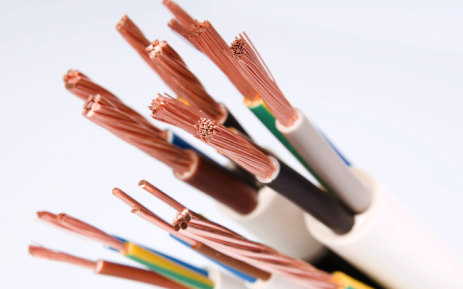Communication has come a long way from the days of telegrams and radio waves. Nowadays, we rely heavily on copper wires and optic fibers for our modern gadgets and data encryption. Unlike the bare copper wires of the past, today’s wires are equipped with insulations and alloyed metal sheaths for better accuracy and safety. The number of insulation layers and the type of materials used play a crucial role in ensuring safety. However, impurities can still pose a challenge, affecting accuracy and causing signal disruptions.
Most copper wires used in circuits can be adapted and set up in modern telecommunication networks. These wires play a crucial role in facilitating efficient signal transmission and processing within the electronic nodes of the circuit. For manufacturers, it’s vital to produce copper wires with the highest purity compared to other conductor wires. The bunched-type copper wires, for instance, have minimal impurities, less than 0.003 percent. Anything other than copper in the mix is considered an impurity. It’s worth noting that the alloy-making process isn’t about introducing impurities; instead, it’s a way to enhance the physical and electrical properties of the bare copper wires by combining them with other conductor metals.
The purity of copper wires can be adjusted based on what customers need and the specific applications they’re used for. The specifications of the wire also influence how bare copper wires are made. Pure copper wires, while high in purity, are less flexible and harder to shape into thin wires or flat plates. However, when alloyed with metals like tin, zinc, silver, and nickel, the properties of these copper wires change significantly. This transformation allows them to be spun into thin wires, making them suitable for use in smaller motors and appliances with limited space.
In certain industries, like aerospace, they demand bunched copper wires with a whopping 99.99 percent purity. This goes into critical areas like cockpit circuitry, space shuttles, radio gear on space stations, and maritime engineering. These special bunched copper wires are made specifically to ensure top-notch accuracy and zero interference, meeting the high standards of these industries.
Bunched copper wires are coiled into concentric loops, and a solenoid model is often used to maintain their electromagnetic properties. Depending on the application, these wires can be wrapped around an ion rod or a wooden rod. They may also be arranged in semi-concentric arcs or half-frame arcs, which not only preserves their properties but also saves space in storage. To provide essential information, markings and hologram effects are added to the insulation sheaths, highlighting the wire’s diameter, insulation, and tolerance levels. The manufacturing date is also indicated. The cable memory, a unique feature of bunched copper wires, contributes to their reputation as top-notch components in the industry.
Final Thoughts
In the world of communication tech, we’ve come a long way from old-school telegrams to today’s fancy bunched copper wires. These wires are like the superheroes of the industry, working seamlessly in everything from aerospace gadgets to small household appliances. The secret sauce? Well, it’s all about their purity, clever manufacturing, and tiny details like hologram-marked insulation. These wires are the unsung heroes connecting our gadgets and making the modern world go ’round. So, next time you send a text or power up your favorite gadget, give a little thanks to those trusty bunched copper wires!
